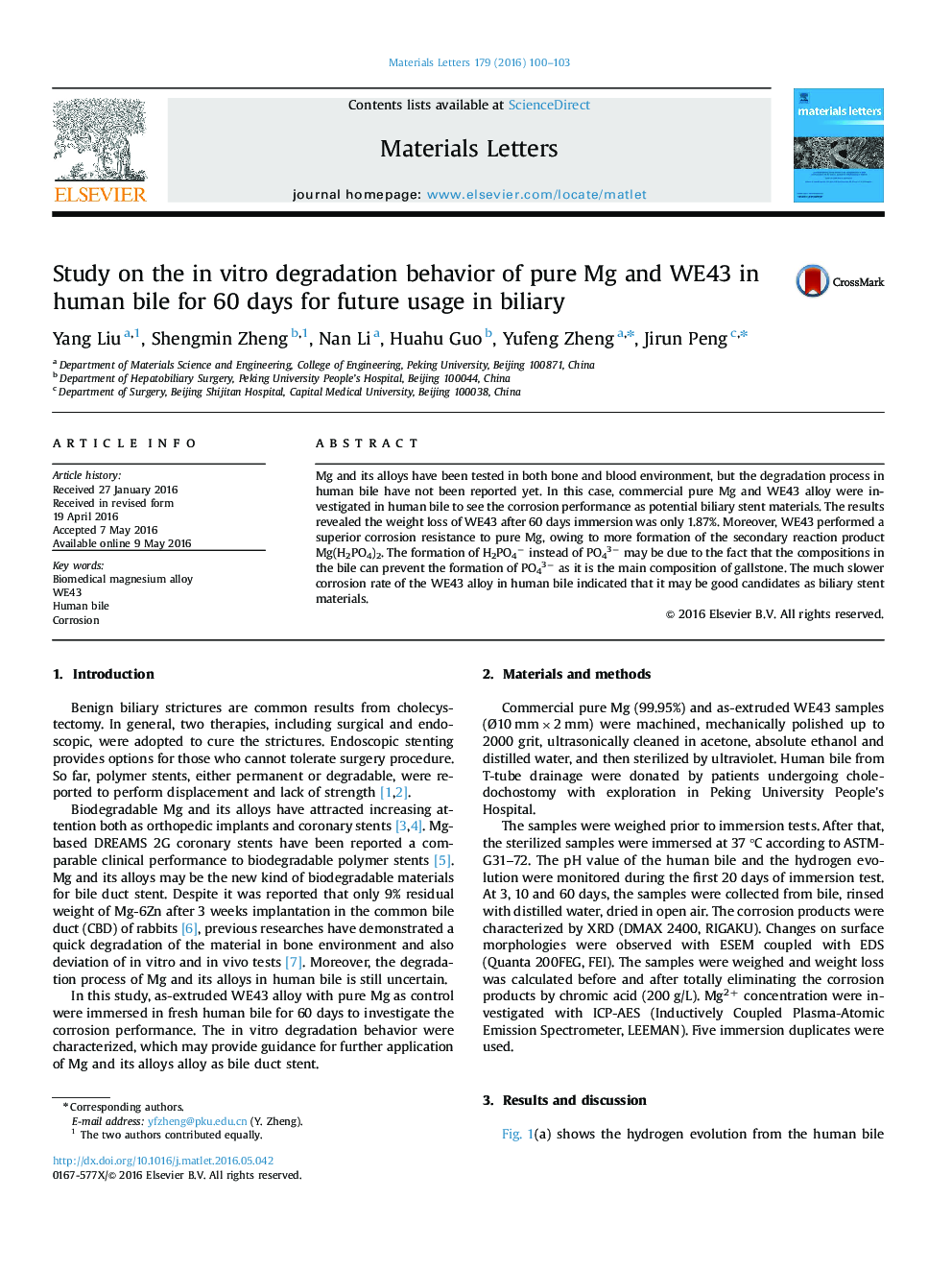| Article ID | Journal | Published Year | Pages | File Type |
|---|---|---|---|---|
| 1641200 | Materials Letters | 2016 | 4 Pages |
•Mg(H2PO4)2 formed on WE43 when incubated in human bile.•WE43 alloy revealed a calculated corrosion rate of 0.074±0.002 mm/y in human bile.•Biodegradation mechanism of Mg based alloys in human bile was first illustrated.
Mg and its alloys have been tested in both bone and blood environment, but the degradation process in human bile have not been reported yet. In this case, commercial pure Mg and WE43 alloy were investigated in human bile to see the corrosion performance as potential biliary stent materials. The results revealed the weight loss of WE43 after 60 days immersion was only 1.87%. Moreover, WE43 performed a superior corrosion resistance to pure Mg, owing to more formation of the secondary reaction product Mg(H2PO4)2. The formation of H2PO4− instead of PO43− may be due to the fact that the compositions in the bile can prevent the formation of PO43− as it is the main composition of gallstone. The much slower corrosion rate of the WE43 alloy in human bile indicated that it may be good candidates as biliary stent materials.
Graphical abstractFigure optionsDownload full-size imageDownload as PowerPoint slide
